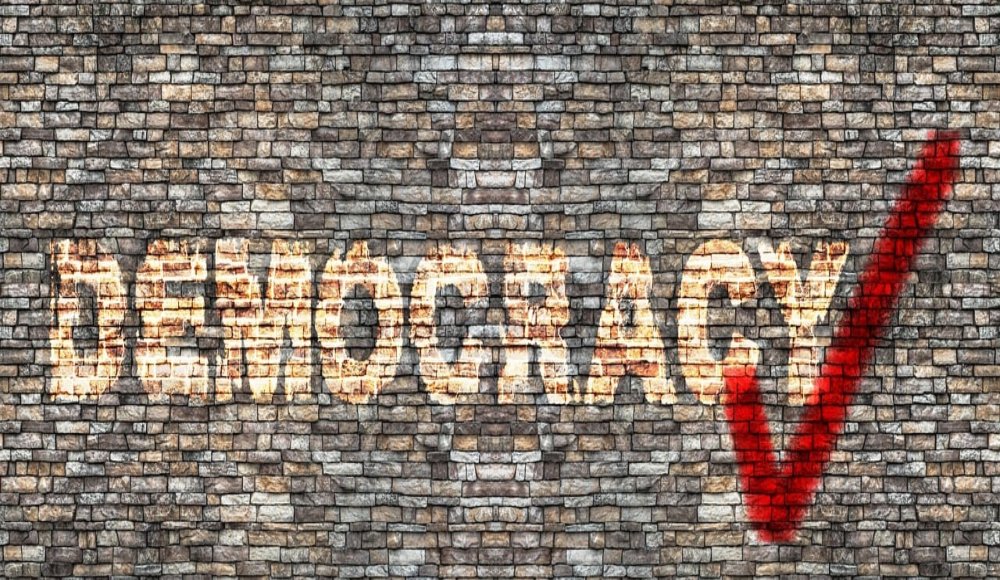With the usual caveat that much of the vote is sitting uncounted in county elections office or in the lukewarm embrace of the U.S. Postal Service, there are some interesting takeaways from the early primary results.
In the Spokane mayor’s race, Lisa Brown is leading incumbent Nadine Woodward, who had just 38 percent of the vote. South of 40 percent is never a good look for an incumbent. It’s technically a nonpartisan race, but Brown is a progressive Democrat who represented Spokane in the Legislature for years before an unsuccessful bid for Congress and a stint as Gov. Jay Inslee’s commerce secretary.
Woodward, meanwhile, has been the beneficiary of big independent spending by the Realtors and the Spokane Good Government Alliance, a business-backed PAC. A similar dynamic is playing out the race for city council president, where current councilmember Betsy Wilkerson is leading Kim Plese, who has independent backing similar to Woodward’s. Look for independent players on both sides to spend some bank on these races in the fall.
In Seattle, two of the three incumbent city council members on the ballot are currently under 50 percent. Andrew Lewis looks to be on particularly shaky ground with just 40 percent of the vote in District 7. Lewis cast the decisive vote earlier this year against adopting the state’s new drug possession law into the city’s code, and his downtown-centered district is particularly fired up about rampant public drug use and associated problems. Whether the anti-Lewis vote coalesces around Bob Kettle in November, and whether Lewis gets the same outside support from labor he got in 2019 both remains to be seen.
In Southeast Seattle’s District 3, incumbent Tammy Morales had 48 percent of the early vote, compared to 45 percent for challenger Tanya Woo. The late vote in Seattle tends to break left, so Morales’ position may well improve.
That fat-cat money in Districts 1 (West Seattle) and 4 (U District) seems to have done the trick. Both Rob Saka and Maritza Rivera are currently running second in D-1 and D-4, behind progressives Ron Davis and Maren Costa. Rivera, who benefited from more than $80,000 in independent spending, had 34 percent of the District 4 vote, putting her well ahead of Ken Wilson. Saka had 25 percent of the vote, just ahead of Phil Tavel, who lost in the general election in 2019. Look for more independent money in both races.
Up in Whatcom County, you can add County Executive Satpal Sidhu to the list of underperforming incumbents. He had less than 35 percent of the vote. His November opponent looks to be Dan Purdy. It’s technically a nonpartisan office, but Purdy’s endorsement list looks pretty R from here. Sidhu likely avoids a D-on-D challenge from state Rep. Alicia Rule, D-Blaine.
Former U.S. Attorney Nick Brown pulled in more than $240,000 during the first few weeks of his campaign for attorney general, an unusually strong start that signifies he’s being embraced by the state’s political establishment.
Brown’s campaign sent out a celebratory note to supporters this week touting his fundraising prowess. As we noted a while back, Brown’s resume is sort of ridiculously strong for this office, not to mention all those shirtless Survivor pics on the internet.
In the celebratory email, campaign manager Aisling Kerins notes that the July haul is a record for an AG campaign launch. For context, current Attorney General Bob Ferguson, who became a prodigious fundraiser as an incumbent and governor-in-waiting, raised just $27,000 in the first month of his campaign to win the office in 2012. Ferguson went on the raise more than $1.6 million en route to defeating Republican Reagan Dunn.
Piling up a big war chest could keep or drive other candidates — both Republicans and Democrats — out of the race, handing Brown an Art-of-War-style victory long before Election Day.

The individual donors reported to the Public Disclosure Commission look like a lot of prominent Seattle attorneys and a smattering of Olympia smart money. Kerin’s note also added: “It’s also almost double what our opponent raised in new contributions in May and June–combined” (italics hers).
That opponent is state Senate Law & Justice Chair Manka Dhingra, D-Redmond, who has been in the race for months and has raised about $235,000 thus far. There’s no Republican candidate in the race as yet.
Brown’s also raking in big endorsements, including Inslee, former Gov. Chris Gregoire, Seattle Mayor Bruce Harrell, and House Speaker Laurie Jinkins. All that makes him look more and more like a consensus candidate of the Democratic establishment. That’s likely to add up to more money in the coming months. And it’s not good news for Dhingra, who took a little hit from the Legislative Ethics Board recently. That said, Dhingra was reelected to her Senate seat in 2022, which means she gets to run from safety and will be back in the Legislature in 2025 regardless of the outcome of this race.
This article first appeared in The Washington Observer, which tracks politics, government, and the influence thereof in Washington State.

Is it a reader contest – fill in the footnote references?
Here’s my entry:
1. Aisling Kerins managed Inslee’s 2016 governor campaign, among other things.
2. Sun Tzu in the Chinese classic “The Art of War”: “The greatest victory is that which requires no battle.”
In electing attorney generals, we are in effect setting in motion a new governor. Chris Gregoire pulled off that up-escalator and it is likely that AG Bob Ferguson will repeat the promotion. It’s good training, since the AG office must serve many departments in state government, and the office provides lots of media opportunities, including perp walks. Another advantage: many of the employees work out of Seattle.